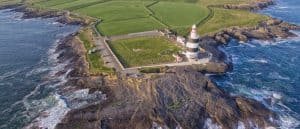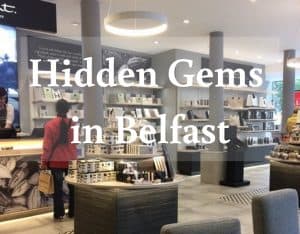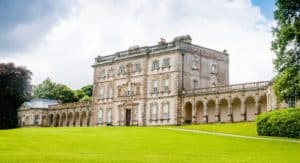A Journey through the Celtic Nations: History, Culture, and Attractions
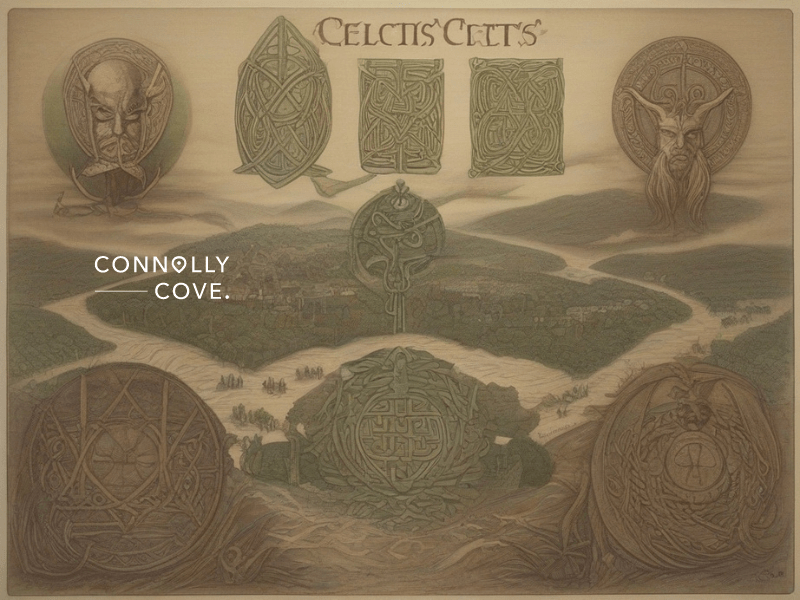
Updated On: March 21, 2024 by Asmaa Alhashimy
Across the western edge of Europe lies a tapestry woven with ancient languages, captivating music, enduring myths, and breathtaking landscapes. The six Celtic nations —Ireland, Scotland, Wales, Cornwall, the Isle of Man, and Brittany— each with its own distinctive character, are bound together by threads of culture and a collective history that dates back centuries.
The Celtic countries stand as living testimonials to the endurance of cultural identity in an ever-changing world. From the rolling hills of Ireland to the rugged landscapes of Scotland, the dragon-adorned hills of Wales, the coastal beauty of Cornwall, the tranquil Isle of Man, to the rocky shores of Brittany, each region boasts its own narrative waiting to be uncovered.
Let’s embark on a journey through the Celtic nations, where we will explore the ancient roots of these nations, delve into the unique languages and traditions that define their identities, and uncover the enchanting landscapes and iconic landmarks that draw visitors from across the globe.

What Are the Celtic Countries?
The term Celtic countries refers to regions where Celtic languages are still spoken or have been spoken historically and where Celtic cultures have thrived. The six Celtic nations are Ireland, Scotland, Wales, Cornwall, the Isle of Man, and Brittany.
The Celtic nations share a common Celtic history and heritage, including the legacy of the ancient Celts, who once thrived across much of Europe. The term “Celtic” derives from the Greek word “Keltoi,” which was used to refer to various groups of people (Celts) living in Western Europe during the Iron Age.
Let us delve into the heart of the Celtic countries, where heritage is not just a relic of the past but a vibrant force that shapes the present and future.
1. Ireland: The Emerald Isle
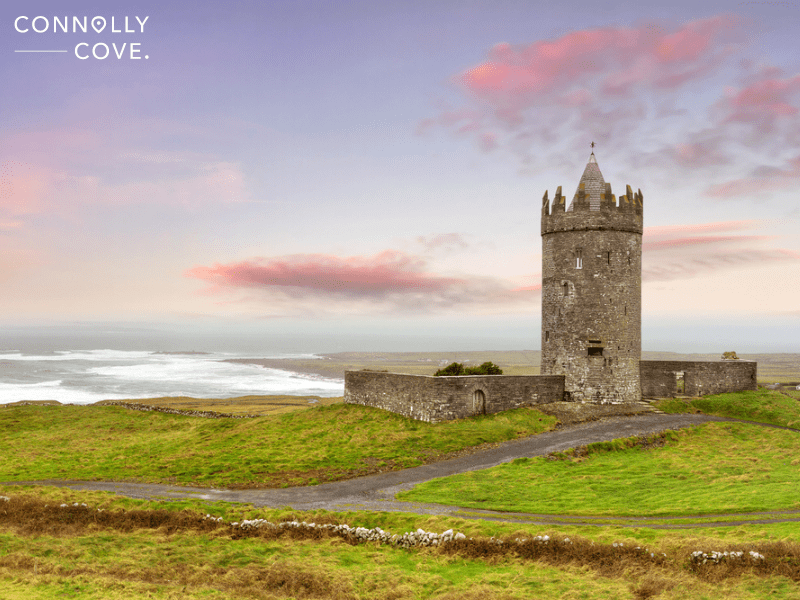
Ireland, often called the Emerald Isle, is a captivating country of lush landscapes, ancient legends, and warm hospitality. This Celtic nation holds a unique place in the hearts of those who seek the intersection of tradition and modernity.
Unique Irish Traditions
While English dominates, the Irish language remains central to cultural identity and is spoken by over 1 million people. It is a cornerstone of Irish culture and identity, echoing through the land in song, poetry, and daily life.
Ireland also celebrates its rich heritage through vibrant festivals throughout the year. Samhain, marking the Celtic New Year, is celebrated with bonfires, costumes, and spooky stories. St. Patrick’s Day, a national holiday, sees the country explode in green with parades, festivities, and traditional music.
Irish folklore and mythology add an enchanting layer to the country’s cultural fabric. Tales of leprechauns, fairies, and ancient warriors come to life in the stories passed down through generations.
The Irish love for storytelling transcends literature and is evident in their traditional music and dance. From lively pub sessions filled with fiddles and bodhráns to the rhythmic footwork of Riverdance, Ireland’s cultural heartbeat resonates through its arts.
Iconic Attractions and Landmarks
Ireland’s charm extends beyond its cultural heritage to its breathtaking landscapes and stunning attractions. Here are some of the most famous attractions in Ireland:
- Cliffs of Moher: These dramatic cliffs, towering over the Atlantic Ocean, offer breathtaking views and are a must-visit for anyone exploring Ireland.
- Blarney Stone: Kiss the Blarney Stone, located atop Blarney Castle, and be gifted with the “gift of the gab.” The medieval castle, with its historical gardens, offers a unique and picturesque experience.
- Ring of Kerry: Take a scenic drive and journey along the Ring of Kerry, a breathtaking coastal route offering stunning vistas, charming villages, and ancient ruins.
- Giant’s Causeway: Witness the geological wonder and UNESCO World Heritage Site of the Giant’s Causeway, featuring over 40,000 hexagonal basalt columns.
- Connemara National Park: Hike through the rugged landscapes of Connemara National Park, explore the desolate beauty of its bogs and mountains, and discover hidden lakes and waterfalls.
2. Scotland: A Highland Adventure

Scotland, a land where history is etched into every stone and the rugged beauty of the Highlands commands attention, stands as a testament to the enduring spirit of the Celtic tradition.
Unique Scottish Traditions
The heart of Scotland beats to the rhythm of its Gaelic heritage. While English is widely spoken, the Gaelic language still resonates in the Highlands and islands, connecting contemporary Scots to their ancient Celtic roots.
No symbol is more iconic of Scotland than the kilt, a pleated garment traditionally worn by men. It is often worn at formal events and Highland Games. The haunting sound of bagpipes is another iconic element, filling the air with a unique melody that stirs the soul.
A celebration of Scottish culture and heritage, the Highland Games feature athletic competitions like caber tossing, hammer throw, and stone put, as well as traditional music, dance, and piping. These games offer a glimpse into the country’s strong traditions and athletic prowess.
Scotland’s calendar is adorned with festivals that celebrate its unique cultural heritage. The Edinburgh Festival Fringe, the world’s largest arts festival, brings together performers from worldwide, while the Royal Edinburgh Military Tattoo highlights the country’s martial traditions.
Iconic Attractions and Landmarks
Scotland’s landscape is a canvas painted with moody lochs, imposing castles, and heather-clad hills. Here are some of the most famous Scottish attractions:
- Loch Ness: Embark on a cruise on the legendary Loch Ness, searching for the elusive monster and soaking in the beauty of the surrounding mountains and forests.
- Edinburgh Castle: Perched atop a volcanic rock, Edinburgh Castle is a majestic symbol of Scottish history and power. It dominates the city skyline, offering a glimpse into Scotland’s turbulent history. Explore its ancient chambers, learn about its fascinating past, and enjoy stunning panoramic views of the city.
- Isle of Skye: Discover the breathtaking landscapes and dramatic scenery of the Isle of Skye, with its rugged coastline, rolling hills, and ancient castles.
- Glencoe: Hike through the dramatic scenery of Glencoe, a glacial valley known for its towering mountains, waterfalls, and historical significance.
3. Wales: The Land of Dragons and Song
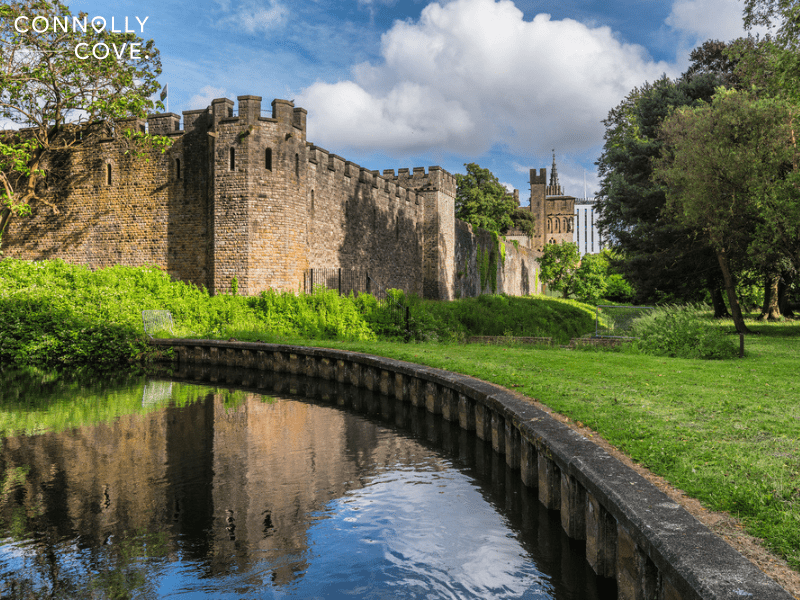
Wales, a nation proudly draped in myth and melody, beckons visitors to explore its rugged landscapes, ancient castles, and a cultural identity deeply rooted in poetic expression. It offers a unique tapestry of ancient traditions, stunning scenery, and warm, welcoming people.
Unique Welsh Traditions
Unlike other Celtic regions heavily influenced by Roman and Anglo-Saxon cultures, Wales remained a stronghold of Celtic traditions. This resulted in the strong preservation of the Welsh language (Cymraeg), its folklore, music, and ancient customs. A significant portion of the population still speaks the Welsh language, which is a cornerstone of Welsh identity.
Wales’ rich heritage is evident throughout the country, from its ancient castles to its traditional music and poetry festivals. The Eisteddfod, a festival dating back to the 12th century, brings together bards and performers to compete in a celebration of Welsh arts. It serves as a testament to the enduring nature of Wales’ cultural identity.
Iconic Attractions and Landmarks
With its dramatic mountains, rolling green valleys, and captivating coastline, Wales is a land of captivating beauty and enchanting charm. Here are some of the iconic Welsh attractions:
- Snowdonia National Park: Hike the tallest mountain in Wales, Snowdon Mountain, or explore the park’s diverse landscapes, including lakes, forests, and waterfalls.
- Caernarfon Castle: Built by King Edward I in the 13th century, this magnificent castle is a UNESCO World Heritage Site that gives amazing views of the surrounding countryside.
- Brecon Beacons National Park: Explore the diverse landscapes of Brecon Beacons National Park, with its mountains, valleys, waterfalls, and caves. Enjoy outdoor activities like hiking, cycling, and horseback riding.
- Portmeirion: This charming Italianate village, nestled on the coast of North Wales, is a unique and whimsical escape. Explore its colourful buildings and beautiful gardens, and enjoy the tranquil atmosphere.
4. Cornwall: A Celtic Presence by the Sea
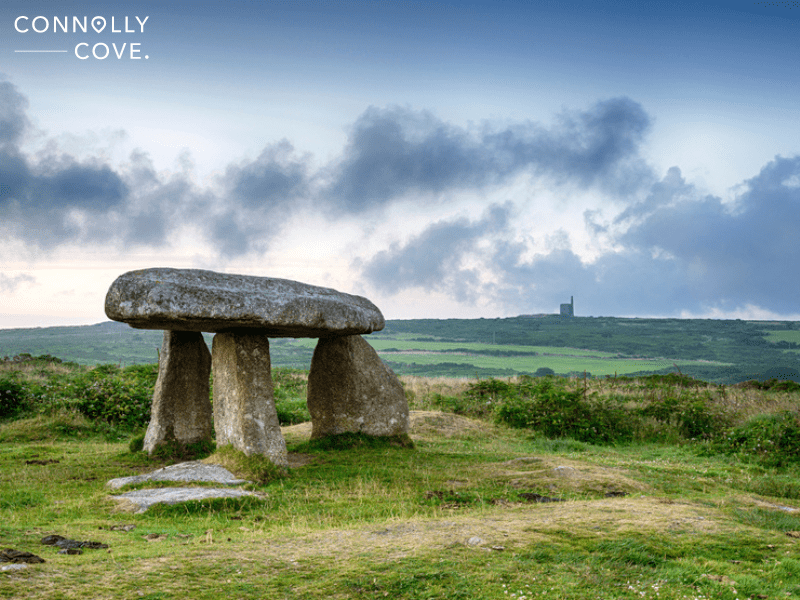
Cornwall, a coastal haven steeped in Celtic spirit, invites travellers to explore its rugged shores, ancient legends, and a cultural renaissance that breathes new life into its unique identity. It unveils a Celtic spirit that embraces both tradition and innovation against the backdrop of the ever-present sea.
Unique Cornish Traditions
In recent decades, Cornwall has witnessed a revival of the Cornish language, a Celtic tongue silenced for many years. Language enthusiasts and cultural preservationists have worked tirelessly to reintroduce Cornish into daily life, reflecting a commitment to reclaiming a crucial aspect of Cornwall’s identity. This revival extends beyond language, encompassing traditional music, dance, and folklore, fostering a renewed sense of pride in Cornwall’s Celtic roots.
Throughout the year, Cornwall celebrates its Celtic heritage with vibrant festivals like the Helston Flora Day and the Golowan Festival. These celebrations feature traditional music, dancing, and costumes, offering a vibrant showcase of Cornish culture.
Cornwall’s history is also deeply intertwined with mining. Tin and copper mining have played a significant role in shaping the region’s landscape and culture. Today, abandoned mines and remnants of mining towns offer a fascinating glimpse into Cornwall’s past.
Iconic Attractions and Landmarks
Cornwall’s charm lies not only in its cultural resurgence but also in its stunning landscapes. Here are some of the most iconic Cornish attractions and landmarks:
- Tintagel Castle: Steeped in Arthurian legend, Tintagel Castle offers incredible coastal views and a glimpse into Cornwall’s medieval history. Explore the castle ruins, learn about the legend of King Arthur, and imagine the stories that unfolded within these walls.
- St Michael’s Mount: This tidal island, crowned by a medieval church and monastery, offers a unique and picturesque setting. Explore the island’s grounds, climb to the church for breathtaking views, and discover its fascinating history.
- Eden Project: Step inside a series of biodomes that house plants from various climates around the globe. Discover rainforests, explore Mediterranean gardens, and learn about sustainable living practices. This unique ecological attraction showcases Cornwall’s commitment to environmental sustainability.
- Land’s End: Stand at the most westerly tip of England and gaze out at the vast Atlantic Ocean. Hike along the dramatic cliffs, explore the ruins of ancient settlements, and witness the natural world’s power.
5. The Isle of Man: A Celtic Crown Dependency
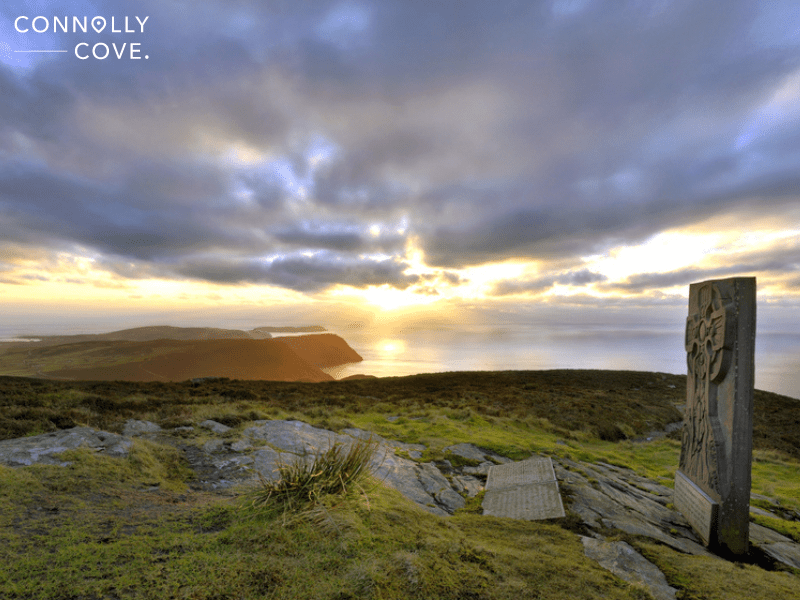
Nestled in the Irish Sea, the Isle of Man, often affectionately known as “Mann,” stands as a tranquil haven, preserving its Celtic heritage amidst serene landscapes, ancient traditions, and a unique status as a self-governing crown dependency.
Unique Manx Traditions
As a crown dependency, the Isle of Man has its own parliament, known as the Tynwald, and issues its own currency. This autonomy has allowed the island to maintain and celebrate its Celtic heritage, particularly emphasising the Manx language, a Celtic tongue with a rich oral tradition. Efforts are underway to preserve and teach Manx Gaelic, ensuring this unique cultural heritage continues to thrive.
Beyond language, the Isle of Man is steeped in folklore, with stories of mythical creatures such as the Moddey Dhoo, a phantom black dog, and tales of ancient Viking and Celtic influences that permeate the island’s history.
The Isle of Man boasts the oldest continuous parliament in the world, the Tynwald, with its origins dating back to the 9th century. The country celebrates its anniversary, Tynwald Day, on 5 July with a vibrant festival featuring traditional music, dancing, and pageantry, showcasing the island’s history and unique culture.
The country also boasts a unique event held annually since 1907, which is the Isle of Man TT Races, a prestigious motorcycle race that attracts riders and spectators from around the world. The thrilling race takes place on public roads along the island’s coast.
Iconic Attractions and Landmarks
Beyond the vibrant Celtic culture and unique traditions, the Isle of Man is a captivating island that boasts breathtaking scenery. Here are some iconic Manx attractions and landscapes:
- Peel Castle: Perched atop a rocky headland overlooking the Irish Sea, this medieval castle is one of the island’s most iconic landmarks. Explore the castle ruins, learn about its Viking and Gaelic influences, and imagine the stories that unfolded within its walls.
- Laxey Wheel: This magnificent Victorian-era waterwheel is the largest working wheel of its kind in the world. Visitors can take a tour inside the wheelhouse and learn about its engineering marvel and historical significance.
- Rushen Castle: This imposing medieval castle, once the seat of the Manx government, offers stunning views of the surrounding countryside. Explore its towers, dungeons, and chambers, and learn about the castle’s role in the island’s history.
- Snaefell Mountain Railway: Take a scenic journey on the Snaefell Mountain Railway, the highest railway in the British Isles. Ascend the slopes of Snaefell, the island’s highest peak, and enjoy breathtaking panoramic views.
6. Brittany: The Celtic French Land
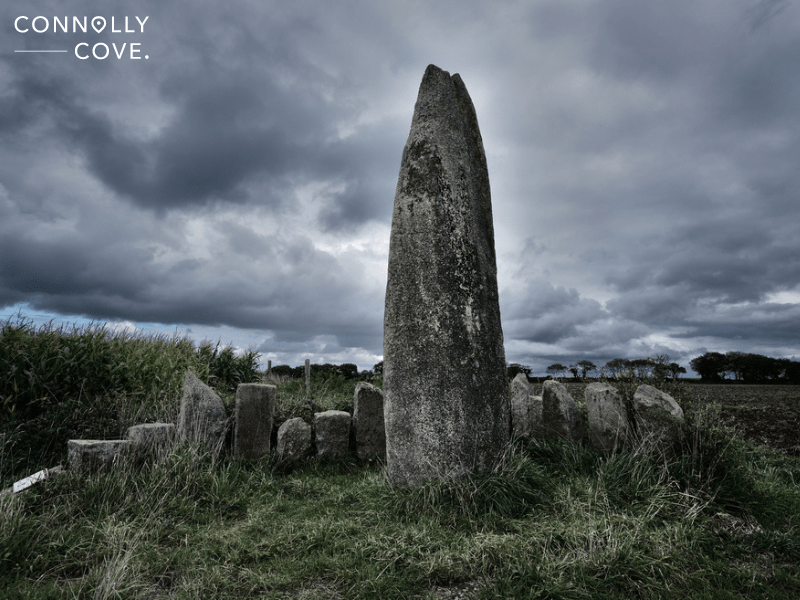
On the northwestern fringes of France, Brittany, or “Bretagne” in French, is a living museum of Celtic culture. This rugged region boasts a unique identity, distinct from mainland France, and its Celtic roots are evident in its language, music, folklore, and cuisine.
Unique Breton Traditions
The Breton language, Brezhoneg, is a living testament to the region’s historical connection to Celtic languages. Though French is widely spoken, efforts to preserve and revitalise Breton have gained momentum, and it is still spoken by a considerable portion of the population.
Brittany’s commitment to its Celtic heritage is celebrated annually at the Festival Interceltique de Lorient. This grand gathering attracts performers and visitors from many Celtic nations around the world, creating a vibrant tapestry of music, dance, and cultural exchange.
Throughout the year, Brittany celebrates its Celtic heritage with other vibrant festivals like the Fest-Noz. These lively Breton folk festivals feature traditional music and dance, offering a glimpse into the heart of Breton culture. It is a chance to experience the lively spirit of Brittany and witness the perpetuation of ancient traditions.
Brittany is also renowned for its delicious crêpes and galettes (thin pancakes made from buckwheat flour). These culinary delights are enjoyed as meals, snacks, and desserts and come in a variety of savoury and sweet options. They are a delicious way to experience Breton culinary traditions.
Iconic Attractions and Landmarks
Brittany’s landscapes are as diverse as its cultural heritage. It is a land of rugged coastlines, ancient megaliths, rolling hills, and natural beauty. Here are some of the most iconic Breton attractions:
- Carnac Stones: Witness the awe-inspiring Carnac stones, a vast collection of megaliths arranged in rows over several kilometres. These ancient standing stones are a UNESCO World Heritage Site and hold a significant place in Breton history and mythology.
- Brocéliande Forest: Explore the legendary Brocéliande Forest, said to be the home of King Arthur and the Knights of the Round Table. Hike through the ancient trees, discover hidden lakes and waterfalls, and let your imagination wander amid the myths and legends.
- Mont Saint-Michel: Set on a tidal island off the coast of Brittany, Mont Saint-Michel is a breathtaking UNESCO World Heritage Site and a marvel of medieval architecture. Explore the abbey, wander through the narrow streets, and climb to the top for breathtaking views.
- Rennes Cathedral: This magnificent Gothic cathedral is a masterpiece of architecture and one of the largest in France. Explore the cathedral’s stained glass windows, admire its intricate carvings, and experience the sense of awe that this sacred space evokes.
The Celtic Countries: A Lasting Legacy
The Celtic spirit is not merely a relic of the past. It is a vibrant force that continues to thrive in the hearts of the people who call these lands home. It is evident in their passion for preserving their languages, celebrating their traditions, and sharing their culture with the world.
If your wanderlust extends beyond the Celtic nations, Europe boasts a plethora of destinations with equally fascinating histories and rich cultural heritage. Visit Spain and immerse yourself in the Moorish influences of Andalusia; explore Italy and delve into the romantic canals of Venice; or visit the captivating islands of Greece and unravel the mysteries of ancient Delphi.


